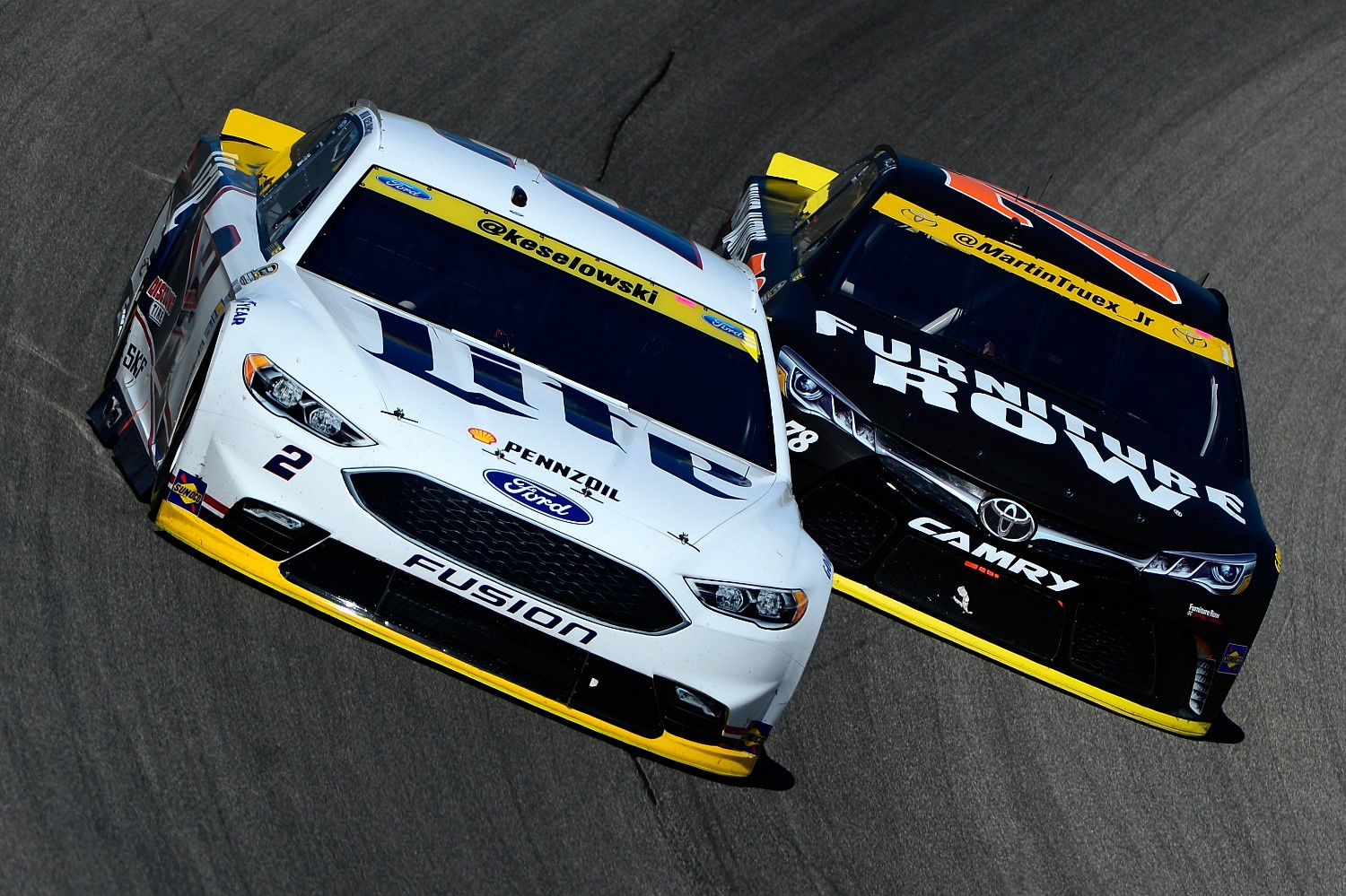Time for NASCAR Cheaters to be disqualified
 |
| Truex battles Keselowski |
JOLIET, Ill. — NASCAR fans are suddenly longing for the days when they never heard of the terms “encumbered" and “LIS."
Once again, NASCAR seems to have backed itself into a corner with a rules change, which then spawned unintended consequences and resulted in another rules change. This is the circle of life in NASCAR.
Last year’s hot rules controversies in the Chase involved restart zones and green-white-checkered finishes. This year, it looks like it’s going to be all about post-race inspection.
Can’t we just talk about the racing?
The answer is no, not when the race winner fails post-race inspection in the opening race of the Chase for the Sprint Cup playoff, which is what happened with Martin Truex Jr. on Sunday at Chicagoland Speedway. And certainly not when the infraction came just days after NASCAR revised its penalty system as a Band-Aid for problems the format created.
If you haven’t been following the latest saga — or even if you have and are confused — here’s a quick refresher before we go further:
• NASCAR changed its playoff system three years ago to reward wins with automatic byes into the next round and created a four-driver championship race where no points were involved.
• That raised the incentive for teams to build cars that were closer to illegal dimensions because points no longer mattered if a driver won a playoff race.
• In the meantime, NASCAR started running the top finishing cars through its laser inspection station (LIS) after the races. The LIS can measure down to a fraction of an inch or degree, which means cars started failing inspection after they already passed it before the race.
• NASCAR realized it wouldn’t want to strip a championship from a driver based on a car failing inspection by a tiny amount, so it made a rule change last week that said only major violations (failing the LIS by a lot, for example) would be considered to be an “encumbered" finish. If a result is “encumbered," a winning driver could keep the trophy but lose the privileges that come with it (like using the victory to advance to the next round).
• On Sunday, Truex won the race and failed the post-race LIS by a little (along with Jimmie Johnson, who dominated the race but finished 12th). NASCAR immediately said the finish was not “encumbered" for either driver, which means whatever points penalty Truex gets on Wednesday won’t hurt him — but Johnson’s penalty will (because the No. 48 team needs the points to advance).
If you’re confused, don’t worry: So are many fans. Unless you’re an absolute NASCAR fanatic who follows every bit of the news, it’s hard not to get lost in the details.
You’ll have to forgive fans, then, if they keep asking an obvious question in situations like these: If a car fails inspection and is ruled to be illegal, why is it allowed to keep whatever result it earns?
Short tracks around the country disqualify cars for technical violations, but NASCAR has never done that at the national level. Officials do not want to be changing the result of the race after everyone has left the track.
To be fair, “illegal" doesn’t mean “cheating." Obviously, these cars were legal before the race started. After a three-hour race at 200 mph with hot temperatures, they have a tendency to transform and change their shape. That’s not necessarily blatant, but it is by design because teams have to get as close as the tolerances as they can — or else they’ll get beaten by someone who did it better.
This story isn’t going away because it isn’t the last time a Chase driver will fail post-race inspection during the playoff. If it’s the race winner, fans will keep wondering why NASCAR lets the team off relatively easy.
And what happens if it’s the champion? Perish the thought.
In that sense, NASCAR has a three options:
• Keep going forward with this penalty structure and just deal with griping fans who don’t understand why an illegal car can win the race. The new policy officials created is a reasonable solution to a complex problem, so maybe they can just stick it out.
• Stop doing the post-race laser inspection. If a car clears pre-race inspection, then game on. This would undoubtedly lead to teams figuring out all sorts of ways to bend the rules (along with their cars), but it would keep the egg off NASCAR’s face. The teams want NASCAR to police them, though, so this probably isn’t realistic.
• Begin disqualifying cars who fail inspection. Increase the post-race show by 30 minutes and televise coverage of cars passing through the LIS, interspersed with shots of the nervous race winner and the hopeful second-place driver standing nearby. It would be like an extended replay review in football for a game-winning touchdown.
Meanwhile, this issue is never going to go away until NASCAR starts taking away wins. If that happens, it might really stink for a team that fails by just a fraction, but crew chiefs will have to learn not to come even close to the line or risk a DQ.
The “encumbered" policy is a step toward this line of thinking, but it’s still just a quick patch for a bigger problem.
Ultimately, NASCAR should consider either taking the win away from a car that fails inspection or doing away with post-race inspection altogether. Jeff Gluck/USA Today
